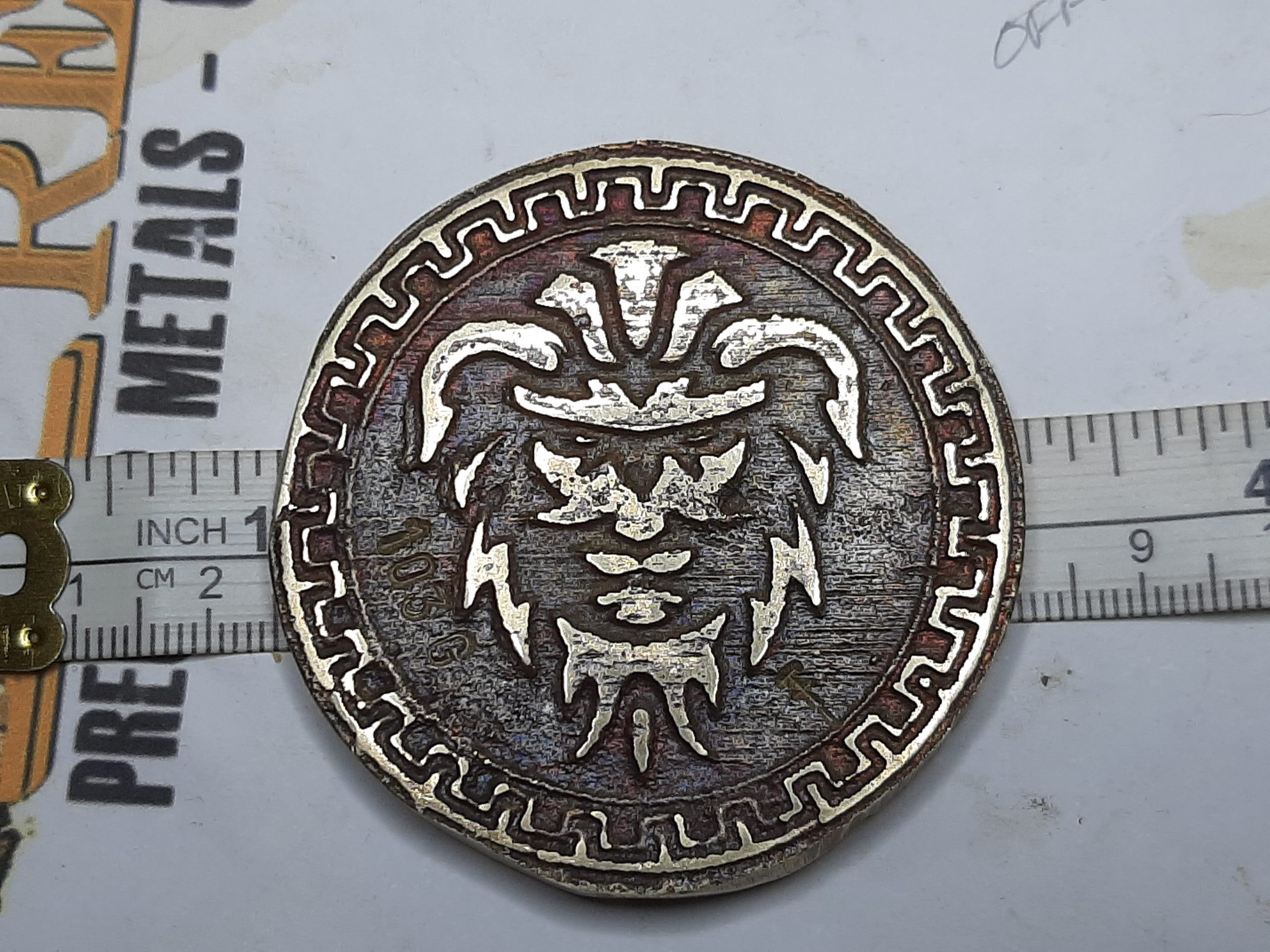Nordic Gold Viking Coin
Nordic Gold was developed in 1991 and is used for Euro Coins to this day. As a copper-based alloy, it is not actually gold. Nordic Gold is 89% Copper, 5% Aluminum, 5% Zinc, and 1% Tin. I alloyed this metal off camera weeks ago. In this video, I thought it would be appropriate to cast a viking coin.
Starting with a stereolithographic file (6 files), I setup the slicer software and printed off all 6 to use for a mold. Sand-casting is still an effective way to shape metal, it just doesn’t retain as many details as investment casting with plaster and vacuums. Sand-casting is much cheaper though. I cast my sand-mold using petrobond, an oil-based sand with fineness between 140 mesh and 190 mesh, using a cullender as a classifier for the initial layer over the mold.



Furnace Use & Maintenance
For the smelt and pour, I use a ToAuto electric melting furnace while I apply rigidizer to the two 10kg propane furnaces. The electric furnace will heat up to about 1150°C (2100°F) – which is just hot enough to melt Iron and plenty for copper. This furnace takes longer to get to temperature and can only handle a 3kg crucible. The propane furnace can handle up to 12kg and reach up to 1450°C (>2600°F), depending on the design. Propane is much quicker but you have to balance the air/fuel mixture to get an approximate temperature.
Propane furnaces also require more maintenance since the ceramic wool will wear over time, the fire brick will break or wear and the wool fibers, which are hazardous, will exhaust with the fumes of the metal being melted. Aside from using a respirator, a refractory coating of rigidizer can be used to help prevent the loose fibers and to insulate the furnace better. This is what was applied in the video.
3D Printed Mold
A 3D Printer is not a requirement for sand-casting or other forms of casting, though it is nice. You can sand-cast just about anything that will fit in your mold. If you want more details you can research lost-wax casting, investment casting or lost-PLA casting. For this video, I 3D printed 6 different designs and chose one for the mold I wanted to make out of metal. There is a whole different learning curve to 3D printing that I won’t go into here.
Used in the Video:
Rigidizer: https://amzn.to/3EGsvMN
ToAuto 3KG Electric Furnace: https://amzn.to/3rdn4Sz
Vevor 10KG Propane Furnace: https://amzn.to/3rdnd8z
CastMaster 10KG Propane Furnace: https://jerokiahdarr.com/castmaster10kg
Ender 3 V2 NEO 3D Printer: https://amzn.to/44I4Qq0
Liver of Sulfur: https://amzn.to/46bD4U9
Petrobond & Sand-Mold: https://amzn.to/3Ezkqtn
Disclaimer: Smelting is dangerous and should be done with a healthy respect for the temperatures along with an understanding of molten metal, gases and toxins in certain metals. Due diligence is very important before any melting should be done at home. Have proper PPE and fire extinguishers, pre-heat molds and be aware of mistakes that can cause injury or even fatalities.
